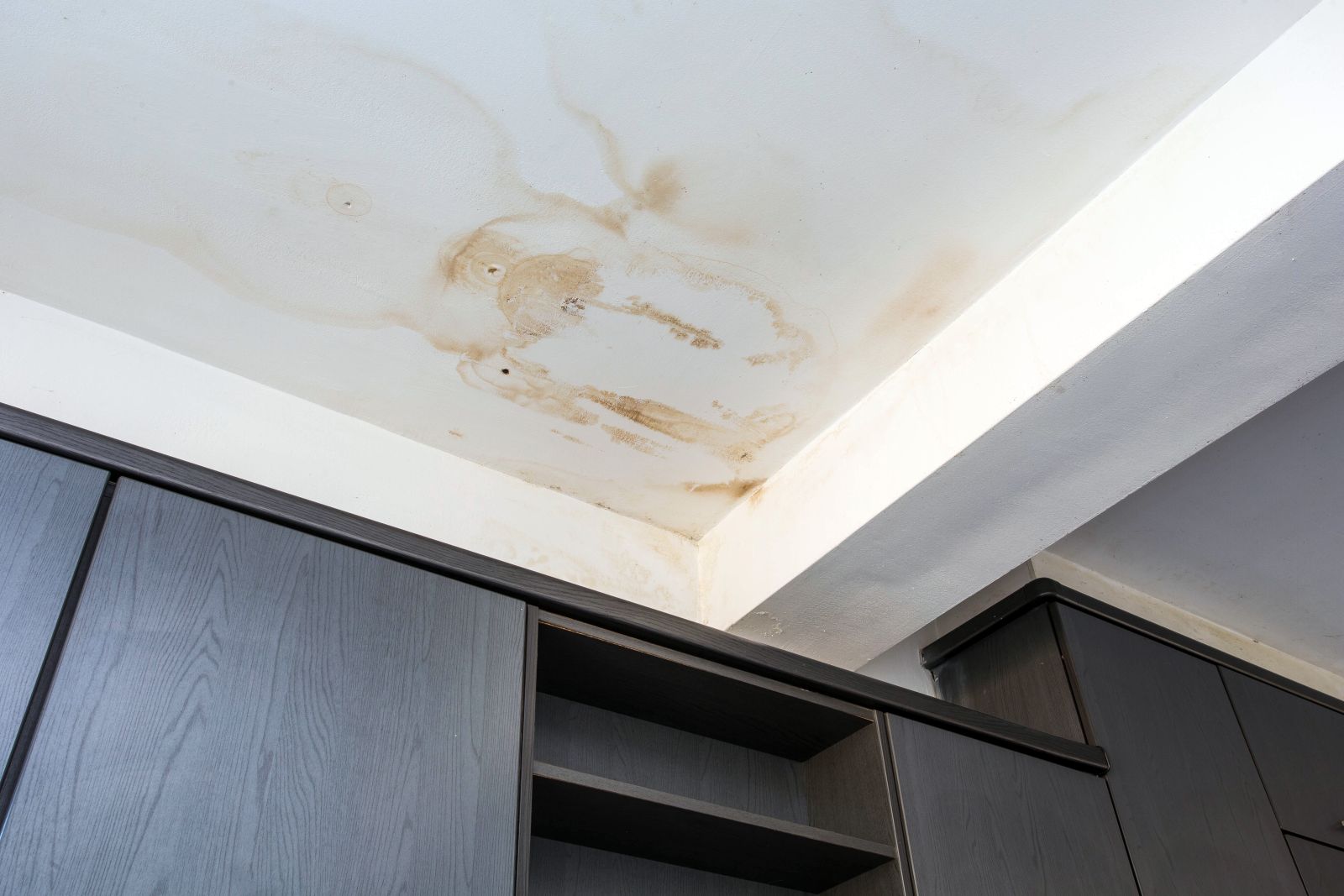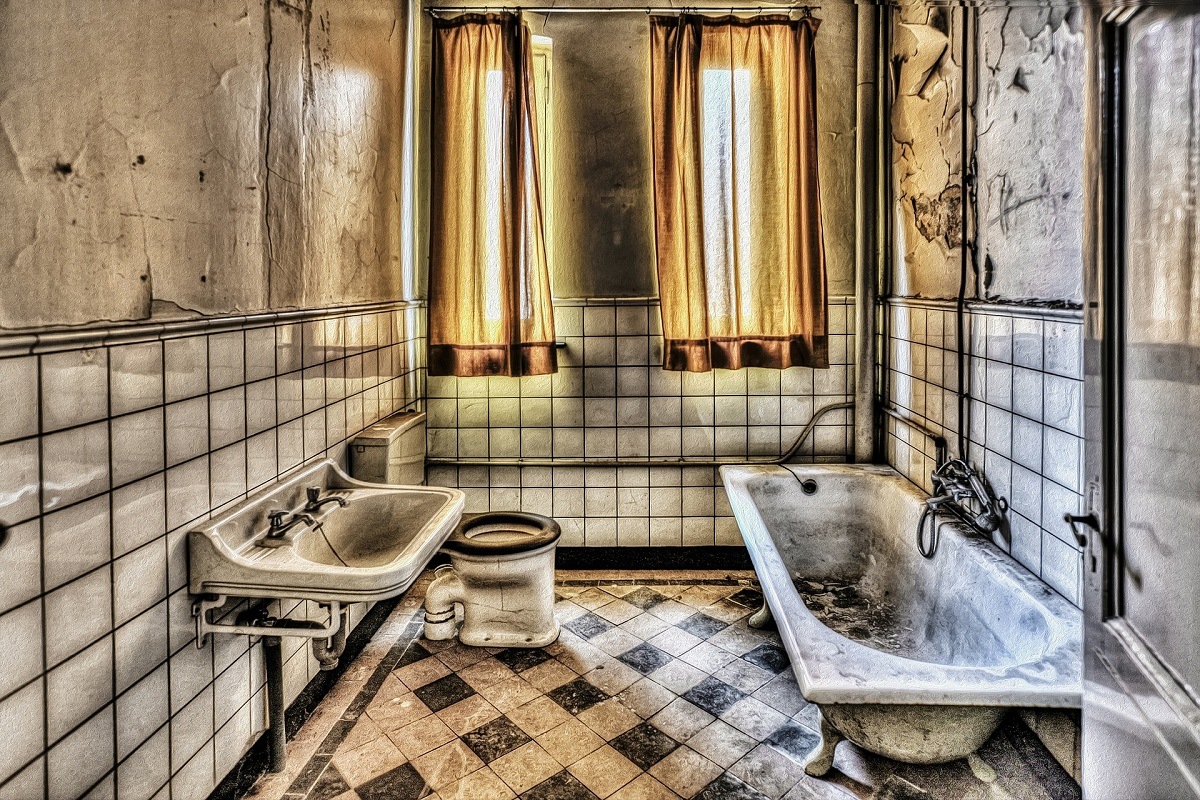Humidity Leads to Destruction in the Bathroom
Humidity Leads to Destruction in the Bathroom
Blog Article
We have stumbled upon this article pertaining to How to Repair and Prevent Bathroom Water Damage? directly below on the internet and decided it made sense to relate it with you on this site.

Water damage commonly happens in the shower room because of the water used everyday. In some cases, the damages could be a little mold from the shower. Other times, it's huge damage on your floor. Whatever it is, it is always great to understand the reason and prevent it before it happens.
This overview will certainly undergo some of the common causes of water damage in the restroom. We will also analyze what you can do to stop these reasons from harming your restroom. Let's dive in.
5 Common Root Causes Of Water Damage in Shower Rooms
These are the typical factors you would have water damage in your shower rooms as well as exactly how you can identify them:
Burst or Leaking Pipelines
There are lots of pipes bring water to various parts of your washroom. Some pipelines take water to the commode, the sink, the faucets, the shower, as well as lots of other locations. They crisscross the tiny area of the bathroom.
Every now and then, these pipes might get corroded as well as ruptured. Various other times, human action could trigger them to leakage. When this happens, you'll discover water in the edges of your shower room or on the wall surface.
To find this, look out for bubbling wall surfaces, molds, or mold. Call an expert emergency plumbing technician to fix this when it occurs.
Splits in your wall tilesv
Washroom wall surface tiles have been specifically developed for that purpose. They secure the wall from moisture from individuals taking showers. Nonetheless, they are not undestroyable.
Often, your shower room wall surface ceramic tiles fracture as well as allow some moisture to permeate into the wall surface. This might possibly damage the wall surface if you don't take any type of action. If you observe a split on your wall surface ceramic tiles, fix it right away. Don't wait up until it destroys your wall surface.
Overruning bathrooms and also sinks
As humans, in some cases we make blunders that might create some water damage in the washroom. For instance, leaving your sink tap on can cause overruning and also damage to other parts of the washroom with wetness.
Likewise, a malfunctioning toilet might cause overruning. As an example, a busted commode manage or various other parts of the tank. When this takes place, it might harm the floor.
As quickly as you notice an overruning sink or commode, call a plumbing professional to aid take care of it right away.
Roof Leakages
Occasionally, the trouble of water damage to the washroom may not originate from the shower room. As an example, a roof covering leak might create damage to the shower room ceiling. You can spot the damage done by checking out the water stains on the ceiling.
If you discover water spots on your ceiling, examine the roofing system to see if it's harmed. After that, call an expert to help resolve the concern.
Excess Wetness
It's great to have that lengthy shower and splash water while you dance around and imitate you're performing, but sometimes these acts might create water damage to your bathroom.
Splashing water around can create water to visit edges as well as form molds. View exactly how you spread excess moisture around, and also when you do it, clean it up to avoid damage.
Final thought
Water damage to your shower room can be frustrating. However, you can manage it if you prevent some of the reasons stated in this overview. Call an expert emergency plumber if you see any severe damages.
How to Repair a Water-Damaged Wall in the Bathroom
All you need to know to repair bathroom wall water damage – from identifying the water source to finishing the repair professionally. If you don’t act quickly to resolve a water damage problem, you could find that it develops into a mold issue and/or cause structural damage to your home. Follow this guide to repair your bathroom before it's too late.
All you need to know to repair bathroom wall water damage
Water damage is a common household problem, and one that, if left unrepaired, can quickly lead to structural problems and health issues. The two most likely rooms where water damage may occur is the bathroom and the kitchen – where water is used often and there is high humidity.
What is water damage?
It is easy to think of water damage as caused by a flood or leaking tap or burst water pipe. However, when water damage is assessed, there are three main categories into which water falls (as classified by the American National Standards Institute). These categories are defined as:
Category 1 Water – ‘Clear Water’
This is sanitary water. There is usually no major threat to health by washing with this water, drinking it, or inhaling if it is streaming. Most water that enters your home will be category 1 water, while most water leaving your home will be either category 2 or 3 water. It may also come from melting snow, rainwater and water tanks.
Damage caused by this type of water can usually be repaired or restored, though this doesn’t mean that there are no potential health issues.
Category 2 Water – ‘Grey Water’
This is contaminated water – sometimes considerably so – and will cause illness if consumed or if it comes into contact with your skin. Water damage in this category is often caused by overflows from toilet bowls, and damage to washing machines and dishwashers. While damaged items might still be repaired or restored after damage by grey water, it is more difficult and more expensive to do so.
If the water damage in your home has been caused by grey water, it is advisable to have repairs made by professionals.
Over time, grey water will deteriorate and become black water.
Category 3 Water – ‘Black Water’
Category 3 water, also known as black water, is highly contaminated and a great risk to health. This may contain raw sewage, heavy metals, and other toxic substances. It will smell terrible.
If this is the water that has caused damage in your bathroom, do not touch it. Stop the water flowing if possible, seal the room and call the experts: it really isn’t worth the risk of ill health and disease that could be fatal. It is very unlikely that items can be repaired or restored if they have been damaged by black water.
https://www.porterscleaning.com/blog/how-to-repair-a-water-damaged-wall-in-the-bathroom/

How to Repair a Water-Damaged Wall in the Bathroom
All you need to know to repair bathroom wall water damage – from identifying the water source to finishing the repair professionally. If you don’t act quickly to resolve a water damage problem, you could find that it develops into a mold issue and/or cause structural damage to your home. Follow this guide to repair your bathroom before it's too late.
All you need to know to repair bathroom wall water damage
Water damage is a common household problem, and one that, if left unrepaired, can quickly lead to structural problems and health issues. The two most likely rooms where water damage may occur is the bathroom and the kitchen – where water is used often and there is high humidity.
What is water damage?
It is easy to think of water damage as caused by a flood or leaking tap or burst water pipe. However, when water damage is assessed, there are three main categories into which water falls (as classified by the American National Standards Institute). These categories are defined as:
Category 1 Water – ‘Clear Water’
This is sanitary water. There is usually no major threat to health by washing with this water, drinking it, or inhaling if it is streaming. Most water that enters your home will be category 1 water, while most water leaving your home will be either category 2 or 3 water. It may also come from melting snow, rainwater and water tanks.
Damage caused by this type of water can usually be repaired or restored, though this doesn’t mean that there are no potential health issues.
Category 2 Water – ‘Grey Water’
This is contaminated water – sometimes considerably so – and will cause illness if consumed or if it comes into contact with your skin. Water damage in this category is often caused by overflows from toilet bowls, and damage to washing machines and dishwashers. While damaged items might still be repaired or restored after damage by grey water, it is more difficult and more expensive to do so.
If the water damage in your home has been caused by grey water, it is advisable to have repairs made by professionals.
Over time, grey water will deteriorate and become black water.
Category 3 Water – ‘Black Water’
Category 3 water, also known as black water, is highly contaminated and a great risk to health. This may contain raw sewage, heavy metals, and other toxic substances. It will smell terrible.
If this is the water that has caused damage in your bathroom, do not touch it. Stop the water flowing if possible, seal the room and call the experts: it really isn’t worth the risk of ill health and disease that could be fatal. It is very unlikely that items can be repaired or restored if they have been damaged by black water.
https://www.porterscleaning.com/blog/how-to-repair-a-water-damaged-wall-in-the-bathroom/
I stumbled upon that blog post on How to Repair and Prevent Bathroom Water Damage? while looking around the internet. Be sure to take the time to promote this blog posting if you appreciated it. Thanks for going through it.
Overflow issues? Our professionals await. Report this page